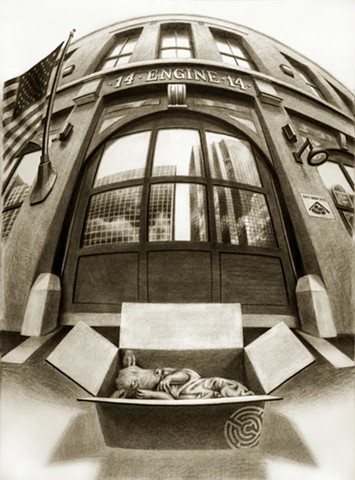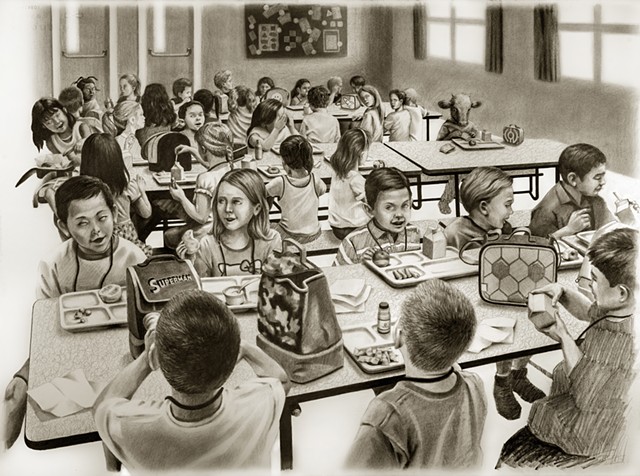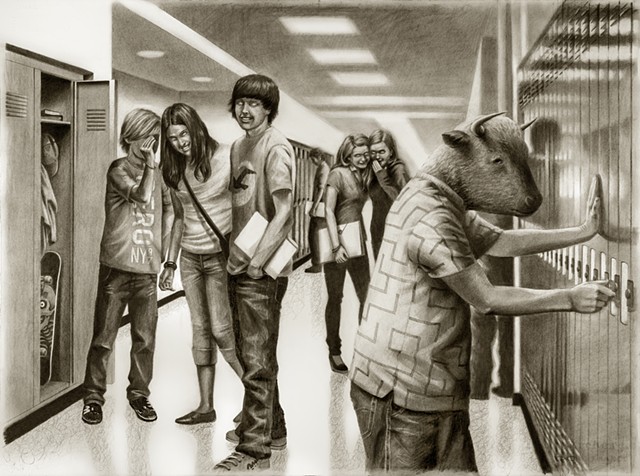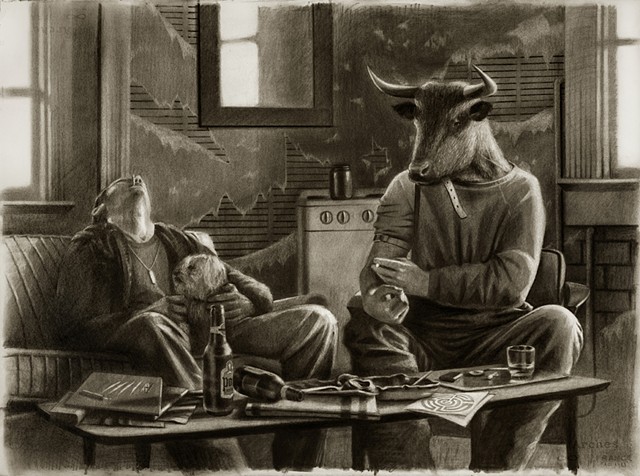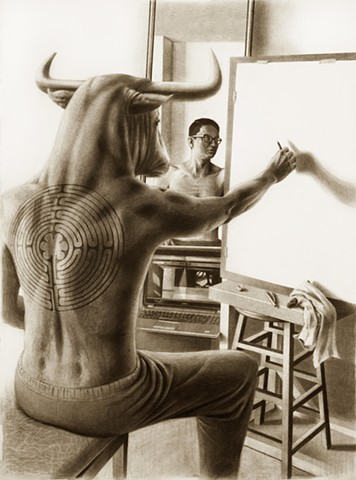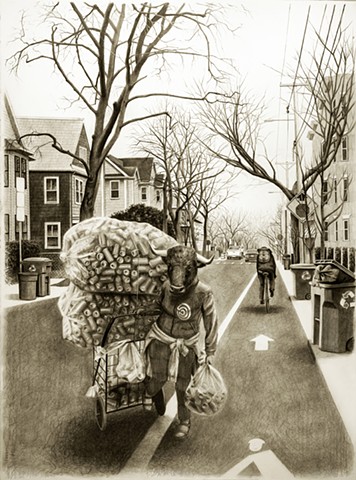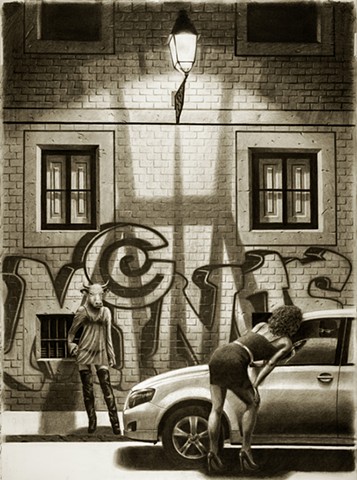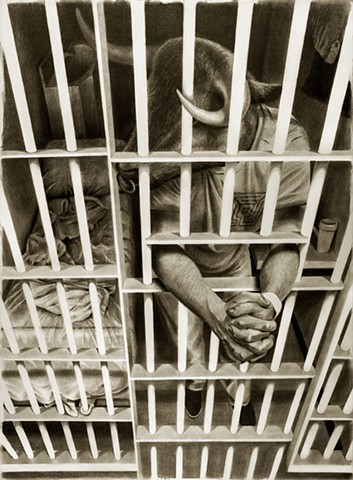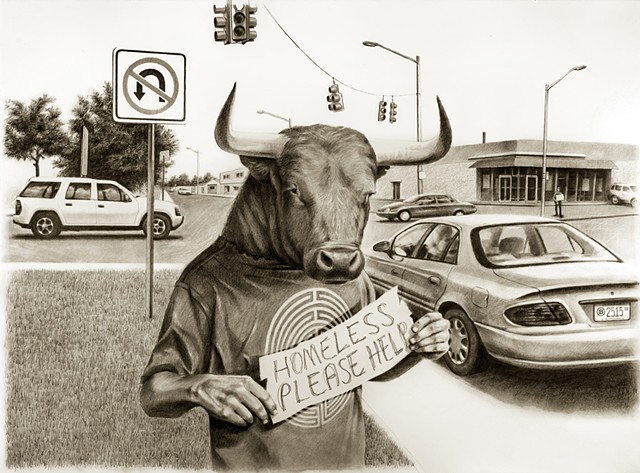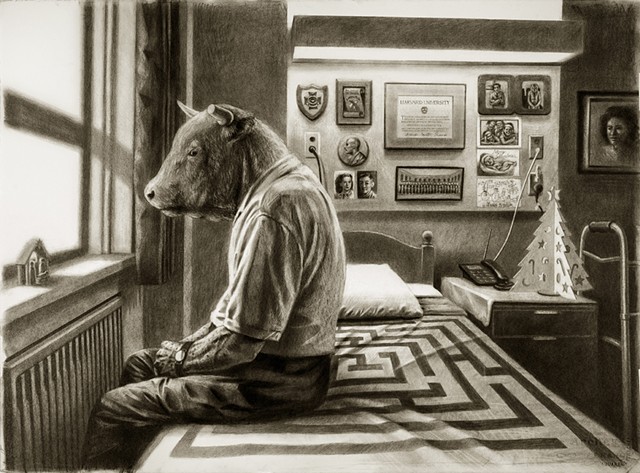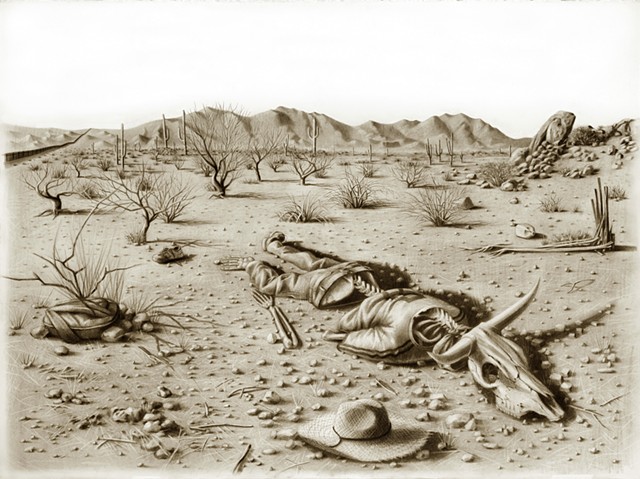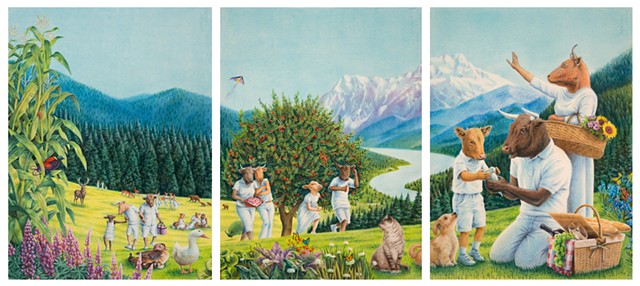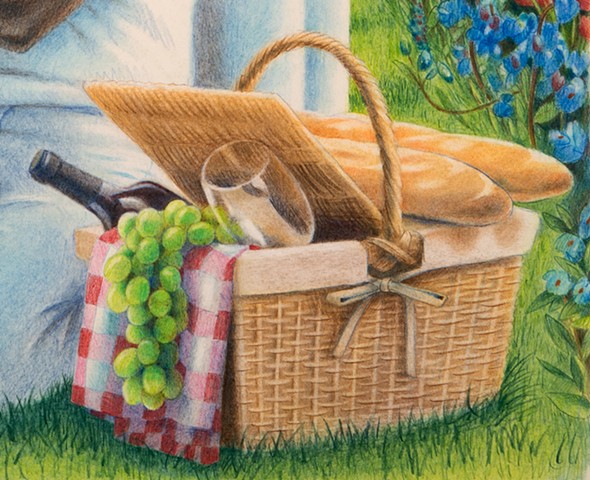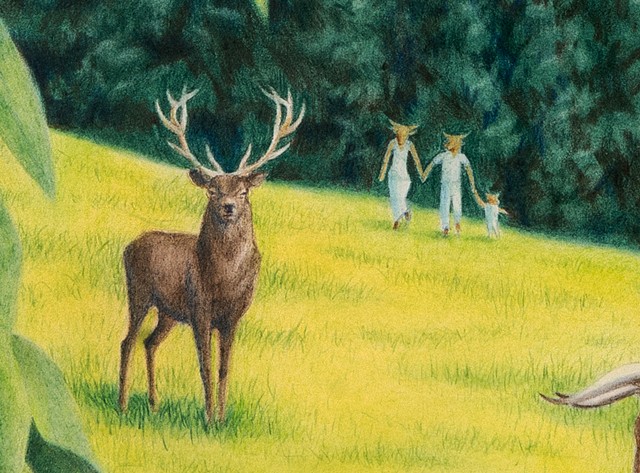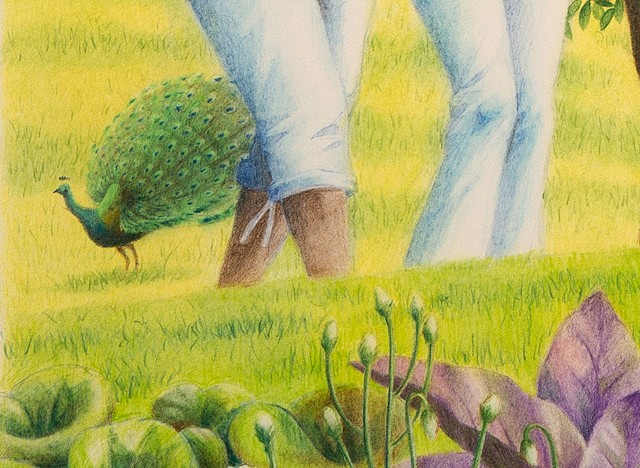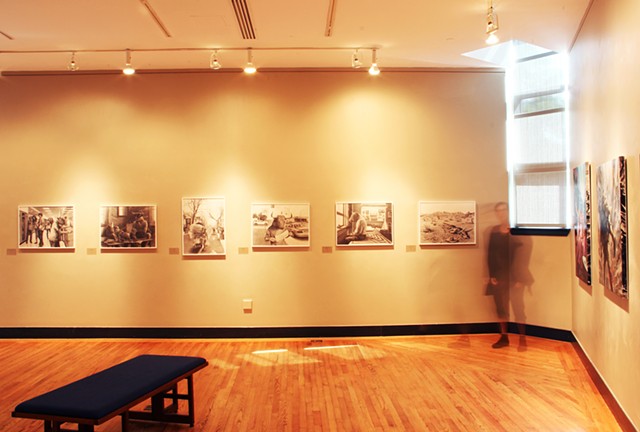The Minotaur Series
Cultures around the world and throughout history have strived to establish stability and order. To this end, those who do not fit into the status quo—those deemed different—are often isolated and silenced. Myths typically portray them as monsters, as the Greek myth of the Minotaur illustrates. The Minotaur’s alienation stems from being reviled by others. To be a monster is not his inherent nature; rather, it is an identity imposed upon him by the mainstream.
This series of drawings juxtaposes the conventional and the grotesque. They depict modern-day Minotaurs navigating familiar settings. By highlighting the instability and disorder inherent in the concept of the monster, the work brings inquiries into societal paradigms to the forefront. It invites consideration of various cultural, religious, political, racial, economic, and sexual conflicts.
By reimagining the Minotaur in contemporary contexts, these drawings challenge viewers to reconsider who is labeled as "other" in today’s world. The grotesque becomes a mirror, reflecting the fears and prejudices embedded within dominant cultural narratives. Through visual tension and symbolic contrast, the series seeks not only to expose mechanisms of marginalization, but also to evoke empathy—inviting reflection on how inclusion and exclusion are constructed, and at what cost.
